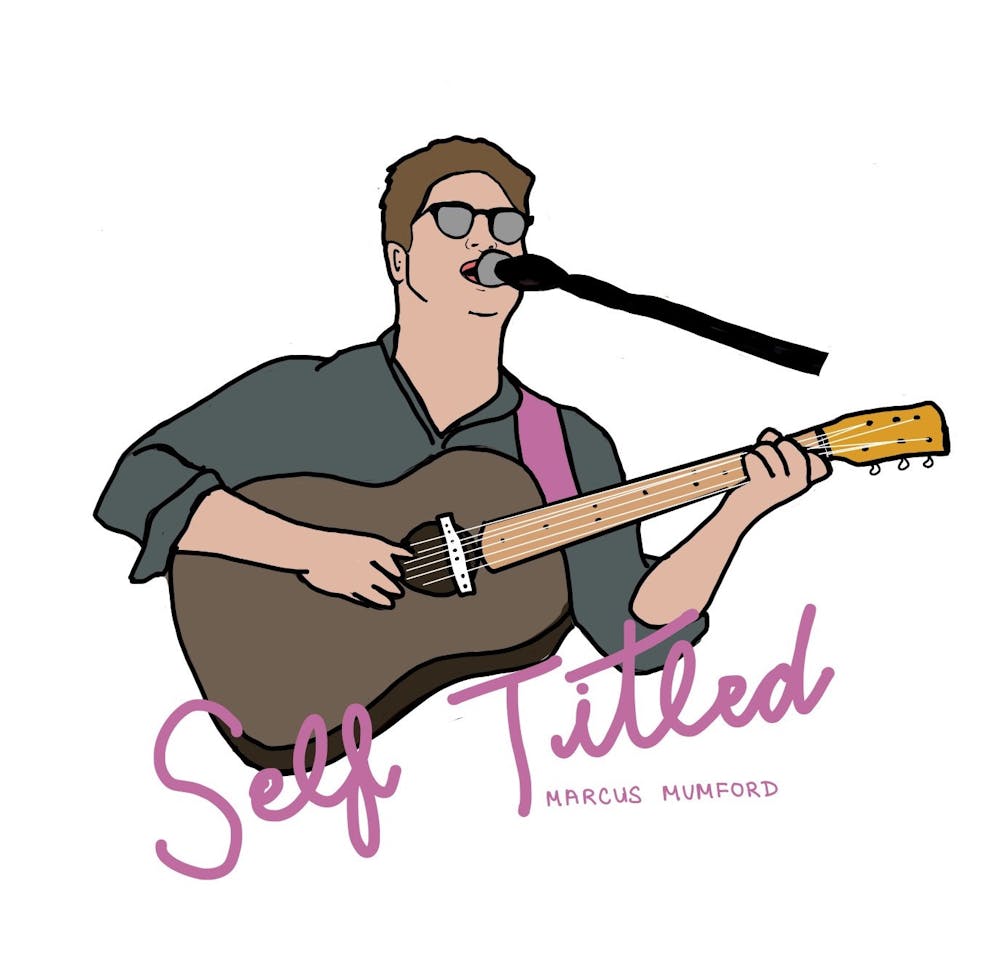On July 12, Marcus Mumford cleared his Instagram feed and posted a single picture: an announcement for his new album “(self-titled).” The news broke a surprising period of inactivity from the artist following the fracturing of Mumford’s Grammy Award-winning band “Mumford and Sons,” due to the controversy involving lead guitarist and banjoist Winston Marshall. While Mumford has kept busy with his work on the soundtrack of the television show “Ted Lasso,” “(self-titled)” is his first venture as a solo artist.
“(self-titled)” originally started with a single track, “Cannibal,” according to Mumford’s announcement.
“I took it to my friend Blake Mills, and we began the process of making this album,” he wrote. The project then grew quickly and gathered collaborators, including popular artists Phoebe Bridgers, Brandi Carlile and Clairo as well as up and coming artist Monica Martin.
Shortly following the Instagram post, Mumford released his first single on July 14, which expunged any doubts about why this project had been expanded from the original single — the song was a harsh and accusatory dive into deep trauma. Slow and cautious, Mumford sings: “Ripped it in with your teeth and your lips like a cannibal/You fucking animal.” But the song explodes at its conclusion, ringing the words: “Help me know how/To begin again.” The track is the perfect introduction for a listener and is a great sample of what Mumford strives for on this album.
Over the following months, Mumford also released the songs “Grace” and “Better Off High,” with the latter song featuring what many believe to be the quintessential Mumford and Sons style. The song slowly builds up into a loud chorus, followed by a repetition of this crescendo.
But when the album released on Sept. 16, the work was notably different from Mumford’s previous style, as it veers closer to indie than his usual folk or bluegrass style, exchanging banjos and acoustic guitars for bass guitars and advanced production techniques.
“Dangerous Game” featuring Clairo is perhaps the high point of the album. Its opening features a seemingly random assortment of noises cleverly strung together by Mills, a producer. But the most intriguing quality of the track is that Clairo does not have a solo, instead serving as the harmony vocals for a majority of the song, a departure from what is typical of featured artists. This keeps the focus on Mumford, in line with the primary narrative of the album as Mumford’s first solo project.
Still, at other points, Mumford’s restrained use of features leaves something to be desired. “Stonecatcher,” the song featuring Bridgers, similarly only has Bridgers singing behind Mumford. The track ultimately feels like a missed opportunity, as Mumford fails to use the full talents of his collaborators.
“Better Angels” acts as a transition, bridging together two central themes of the album: trauma and acceptance. “And here is the moment I deceive my better angels,” Mumford sings, referring to his spiral into unhealthy coping mechanisms and depression. “Is this where we begin again?” he asks as the song closes, displaying Mumford’s resigned acceptance of himself.
The standout feature on the album is Monica Martin’s duet on the track “Go In Light,'' in which Mumford gave the young singer the chance to show off her skills. The track is a cohesive effort between the singers as they cathartically belt out the lyrics: “Cry havoc in the evening/Sirens in the morning.” The words represent the futility Mumford feels in navigating the cycle he is trapped in.
“How,” featuring Brandi Carlile, is the last track on “(self-titled)” and represents Mumford’s final escape from his trauma. He recalls subjects and lines from previous tracks on the album and offers them a new resolution. He nods to the track “Better Off High” with the lyric “And I killed that liar in my head/And buried him beneath the maple tree,” marking the end of his period of hatefulness as he moves into a new phase of his life. It’s resolute and gives the listener a sense of conclusivity about the album and in Mumford’s personal life.
The album closes with the line “And I’ll forgive you now/As if saying the words will make me know how/How, how” — representing the closure and peace that starkly contrast the trauma-filled intro in “Cannibal.”
Mumford’s instrumentation is as strong as his lyricism in this album, painting the picture of a musician reaching new heights as he allows himself to push forward from his musically reserved past.
Dennis Carey is a Sports editor who enjoys playing volleyball, listening to and collecting vinyl records and poorly playing the guitar in his spare time.





